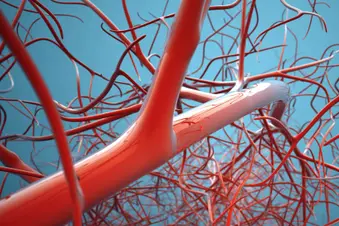
High blood sugar can lead to eye problems like diabetic macular edema (DME), which affects the blood vessels in the back of your eye. When it's not treated, you could lose some or all of your sight.
Causes
DME starts when your blood sugar isn't well controlled. Consistently high blood sugar harms blood vessels throughout your body, like in your heart, as well as the small blood vessels in your retina – the tissue at the back of your eye that sends images to your brain.
Without healthy blood vessels, your retina can't work the way it's supposed to.
Your body tries to help out by making more of a protein called vascular endothelial growth factor, or VEGF. In a healthy eye, this is not a problem. But in some conditions, too much of it weakens those blood vessels. In time, they can tear and leak blood and fluid into your retina. Your retina will swell and get thicker, a condition called diabetic retinopathy. The leaking fluid also causes swelling in the macula, the place in the center of the retina that gives you sharp, clear vision.
"Edema" is a medical word for swelling from extra fluid. So DME is a fluid buildup that makes your macula swollen because of diabetes.
Diabetes is the main cause of macular edema. But it can happen for other reasons, too, including cataract surgery or other operations on your eyes, macular degeneration, swelling in the uvea (the middle part of your eye), blocked veins in your retina, or damage from radiation.
Some medicines for diabetes, cancer, and multiple sclerosis can cause macular edema.
Who Gets It?
Your chances of DME go up when:
- Your blood sugar, blood pressure, and cholesterol stay high.
- You smoke.
- You don't stay active.
You're more likely to get DME if you:
- Have had diabetic retinopathy for a long time
- Are pregnant
- Are African-American or Hispanic
According to Prevent Blindness, DME may affect up to 10% of people with diabetes.
Types of DME
There are two main ones:
- Focal DME is small spots of fluid leaking.
- Diffuse DME has leaks and swelling throughout your macula.
Your eyesight may be worse with diffuse DME.
Symptoms
You could have DME and not know it because it doesn't hurt, and your vision may change so slightly or slowly that you don't realize it's happening.
The macula is the part of your eye where light gets focused, like a movie screen. The extra fluid and swelling in your macula distort that surface, and things look wavy or blurry. It may be harder to recognize a friend's face, read, watch TV, and drive.
You might not notice this if you have DME in just one eye.
Your macula is also key for seeing in color. DME can make colors look faded or washed out.
Show Sources
Photo Credit: E+ / Getty Images
SOURCES:
National Eye Institute: "Facts About Diabetic Eye Disease," "Facts About Macular Edema."
American Academy of Ophthalmology: "Macular Edema Symptoms," "What Causes Macular Edema?"
Diabetes.co.uk: "Blood Vessels."
Learn, Track, Share: A Patient Guide to Diabetic Macular Edema, Angiogenesis Foundation, 2013.
Review of Optometry: "Dissecting DME: A clinician's role in diagnosing and managing diabetic macular edema."
Drugs: "Drug-induced macular edema."
Digital Journal of Ophthalmology: "A Review of Diabetic Macular Edema."
VMR Institute: "What is the Macula?"